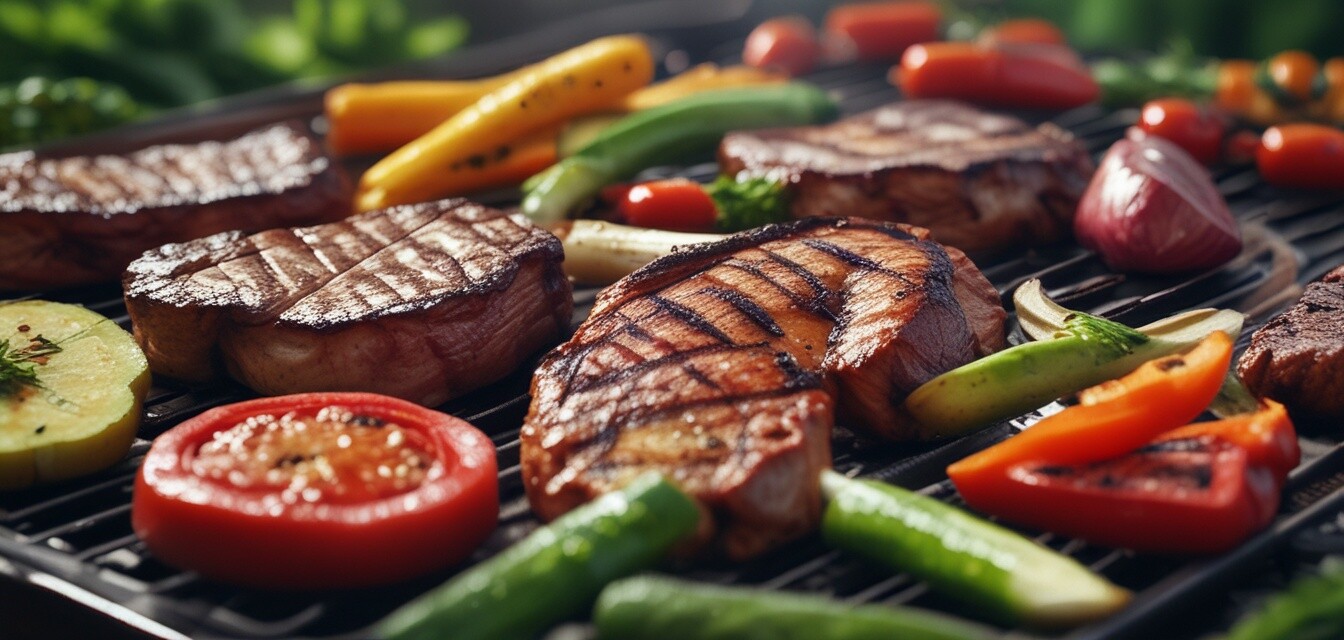
Simple Techniques for Flavorful Grilling
- Choosing the right grill method enhances flavors.
- Marination is key for tender and flavorful meats.
- Use the right tools for optimal grilling results.
- Temperature control is crucial for doneness and juiciness.
- Experimenting with wood chips can add unique flavors.
Grilling is more than just a cooking method; it's an art form that brings out tantalizing flavors in meats and vegetables. In this guide, we'll uncover some simple yet effective techniques that will elevate your grilling game, ensuring perfectly cooked dishes each time. Whether you're a novice or a seasoned griller, you'll find valuable tips to enhance your culinary skills. So let's dive into the world of flavorful grilling!
Choosing the right grilling method
There are various methods of grilling, and the one you choose can significantly affect the flavor and texture of your food. Here are some popular methods:
- Direct grilling: Ideal for foods that take less than 20 minutes to cook, like burgers and steaks.
- Indirect grilling: Excellent for larger cuts of meat that need slower cooking. This method is used by placing the food away from the heat source.
- Smoking: Adds a rich flavor by cooking food slowly over wood chips or charcoal.
Marinades and rubs: Infusing flavor
Marination is a fantastic way to add depth and richness to your grilled dishes. Here’s how to make the most out of marinades and rubs:
Marinating tips
Follow these steps for a flavorful marinade:
- Select your protein or vegetables.
- Combine your marinade ingredients, which typically include:
- Acid (citrus juice, vinegar)
- Oil (olive, canola)
- Flavoring (herbs, spices, garlic)
Dry rub essentials
- Combine different spices and herbs for your rub.
- Apply generously to your proteins at least 30 minutes before grilling.
- For best results, let it sit overnight in the fridge.
Grilling tools and equipment
Having the right tools can make a big difference in your grilling experience. Here are essential tools you should consider:
- Grilling tongs: Great for flipping and moving food around.
- Grill brush: Necessary for maintaining a clean cooking surface.
- Meat thermometer: Essential for checking doneness without cutting into meat.
- Grill baskets: Ideal for smaller items like vegetables that may fall through the grates.
- Heat-resistant gloves: To protect your hands from heat while handling hot items.
Temperature control for perfect grilling
Controlling the temperature is key to achieving perfect grill marks and ensuring your food is thoroughly cooked. Here's how you can achieve that:
Setting up heat zones
For optimal cooking, create different heat zones on your grill:
- High heat zone: For searing meats and creating crusts.
- Medium heat zone: For general cooking and browning.
- Low heat zone: For gentle cooking and keeping food warm.
Knowing when to flip
Flipping too soon can tear the meat. Here's how to know when to turn your food:
- When meat releases easily from the grill grates, it’s usually ready to flip.
- Watch for grill marks; if they're visible and deep, it's time to turn.
Using wood chips for added flavor
Incorporating wood chips can enhance the flavor profile of your grilled dishes. Here’s how to do it:
Choosing the right wood chips
| Wood Type | Best for | Flavor Profile |
|---|---|---|
| Hickory | Pork and ribs | Strong, smoky |
| Apple | Poultry and fish | Sweet, mild |
| Mesquite | Beef | Pungent and spicy |
| Cherry | All meats | Subtle and sweet |
Soak the wood chips for at least 30 minutes before using them on the grill. This allows them to smolder rather than burn and create smoke, which enhances flavor.
Time to showcase your skills!
With these simple grilling techniques, you can elevate your cooking and impress your family and friends. Remember, practice makes perfect, and each grilling session is an opportunity to refine your skills. For more tips and resources, check our other articles in our Cooking Tips & Techniques category. Embrace your inner grill master and enjoy the delicious rewards that come from your efforts!
Pros
- Enhances the flavor of meats and veggies.
- Creates a fun outdoor cooking experience.
- Easy to learn with practice.
Cons
- Weather dependent.
- Can require more cleanup.
- Difficult to achieve consistent heat without practice.